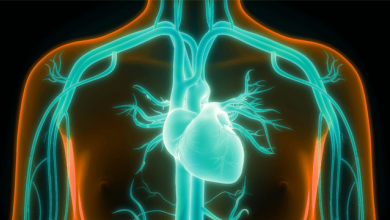Search results
Author(s):
Ethan R Ellis
,
Mark E Josephson
Added:
3 years ago
Author(s):
Erez Marcusohn
,
Ofer Kobo
,
Maria Postnikov
,
et al
Added:
2 years ago
Author(s):
Alexander Feldman
,
Jonathan M Kalman
Added:
3 years ago
The least common type of supraventricular tachycardia is focal atrial tachycardia (AT), accounting for 5-15% of cases presenting to the electrophysiology (EP) laboratory for ablation.1 Focal AT is defined by the presence of a discrete atrial focus with centrifugal spread of atrial activation away from that site.2 It is generally poorly responsive to pharmacological therapy and may be responsible…
View more
Author(s):
Alexander Feldman
,
Jonathan M Kalman
Added:
3 years ago
Focal atrial tachycardia (AT) is the least common type of supraventricular tachycardia, accounting for 5–15% of cases presenting to the electrophysiology (EP) laboratory for ablation.1 Focal AT is defined by the presence of a discrete atrial focus with centrifugal spread of atrial activation away from that site.2 It is generally poorly responsive to pharmacological therapy and may be responsible…
View more
Author(s):
Ethan R Ellis
,
Mark E Josephson
Added:
3 years ago
Cardiomyopathies are heterogeneous heart muscle disorders with a wide range of aetiologies and clinical manifestations. They are often defined by their causes (i.e. hypertension, prior myocardial infarction, valvular heart disease), although current major society definitions describe cardiomyopathy as the presence of abnormal myocardial structure and/or function in the absence of underlying…
View more
Author(s):
Pragnesh Parikh
,
KL Venkatachalam
Added:
3 years ago
Atrial fibrillation (AF) is the most common pathologic clinical arrhythmia lasting more than 30 seconds, and its incidence and prevalence continue to increase. It has been estimated that 5.9 % of patients aged >65 years suffer from AF.1 In the Rotterdam study, 17.8 % of patients over 85 had AF.2 The lifetime risk for developing AF in both men and women above age 40 is one in four.3 This…
View more
Author(s):
Sebastiaan RD Piers
,
Katja Zeppenfeld
Added:
3 years ago
Over the last 20 years ventricular tachycardia (VT) ablation has evolved from a treatment modality for selected patients withrecurrent haemodynamically tolerated VT (which can be mapped during ongoing arrhythmia), to a therapeutic option for patients with tolerated and untolerated VT using substrate-based ablation strategies.1 The substrate for VT after myocardial infarction (MI) consists of…
View more
Author(s):
Sandeep Prabhu
,
Wei H Lim
Added:
3 years ago
Heart failure (HF) and AF are two conditions that are increasing in prevalence worldwide.1,2 They frequently co-exist and in recent years, the clinical and physiological intersection between arrhythmia and HF has become an area of renewed interest, particularly as interventional treatments for rhythm disorders have advanced and moved into the mainstream of cardiac management. In particular, AF,…
View more
Author(s):
Pasquale Vergara
,
Savino Altizio
,
Giulio Falasconi
,
et al
Added:
3 years ago
Author(s):
David Hamon
,
Jane Taleski
,
Marmar Vaseghi
,
et al
Added:
3 years ago
Orthotopic heart transplantation (OHT) is the most effective long-term therapy for end-stage heart disease, with implanted left ventricular assist devices (‘destination therapy’) as an alternative for selected patients. The denervation of the transplanted heart with complete loss of autonomic nervous system modulation, the use of immunosuppressant drugs, as well as the risk of allograft rejection…
View more











